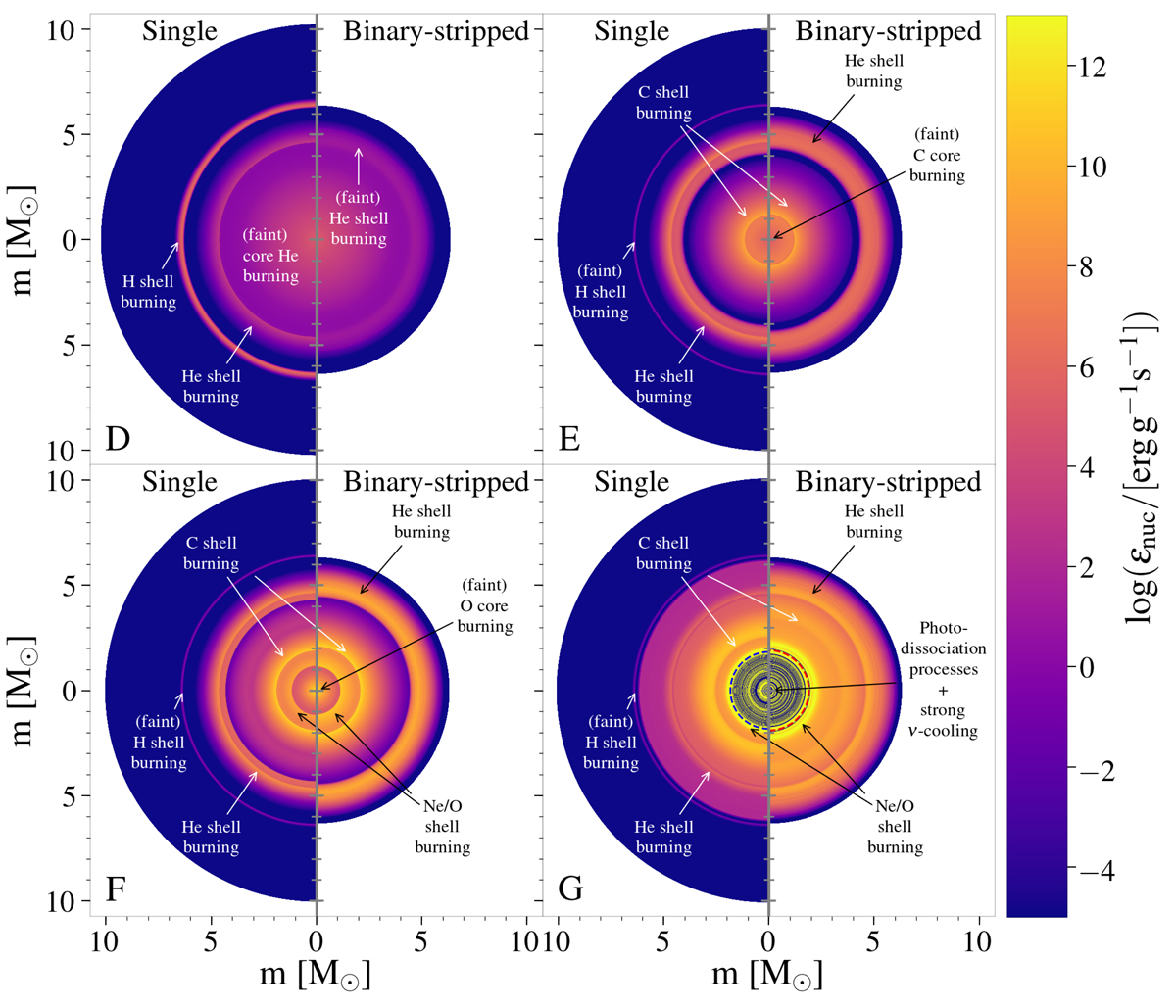Fig. 13.

Download original image
Comparison of the nuclear burning structures of a single (left half-circle) and binary-stripped (right half-circle) star model with the same reference core mass of 6.3 M⊙. Each stellar model is represented as a multitude of two-dimensional half-circles, where the radius of each circle is directly proportional to the mass coordinate. The nuclear energy generation rate is indicated with colors. All models are compared for the same evolutionary steps (D: core helium depletion; E: core carbon depletion; F: core oxygen depletion; G: onset of core collapse). In panel G (onset of core collapse), we give the locations of the mass boundary above the compact object that forms in the center (defined as the mass coordinate where the specific entropy drops below a value of 4 erg g−1 K−1; Ertl et al. 2016) with a dashed blue line (single) and red line (binary-stripped). The binary-stripped star model forms a more massive compact object in its core than the single-star model (1.90 M⊙ compared to 1.83 M⊙).
Current usage metrics show cumulative count of Article Views (full-text article views including HTML views, PDF and ePub downloads, according to the available data) and Abstracts Views on Vision4Press platform.
Data correspond to usage on the plateform after 2015. The current usage metrics is available 48-96 hours after online publication and is updated daily on week days.
Initial download of the metrics may take a while.


